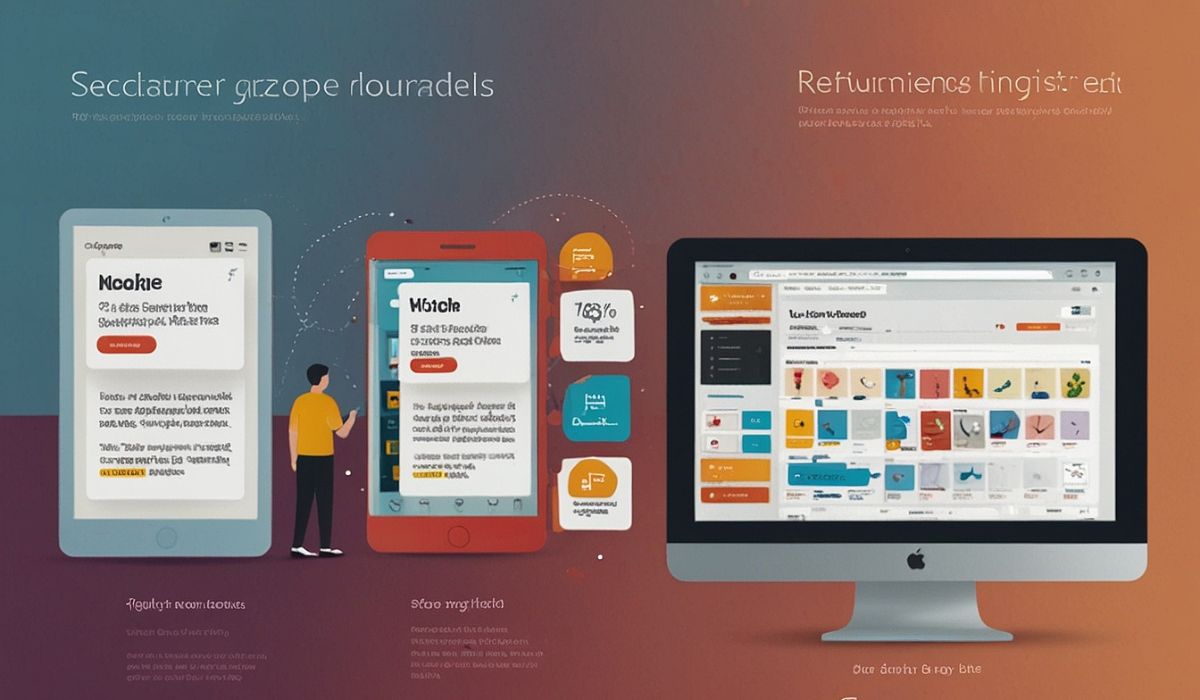Selenium mobile testing is highly critical for making sure that your application or website is completely seamless on all devices. We can easily notice the trend of rising mobile phone usage, so it makes mobile testing even more crucial. The testing facilitates developers in identifying bugs, improving performance, and delivering a quick and error-free User Experience (UX)
Selenium is not only popular but it also streamlines and accelerates mobile testing. It makes test automation of mobile web applications simpler and faster and ensures they function as they should in browsers and on handsets.
Following best practices prevents common issues and maximizes testing. Best practices help testers save time, write better scripts, and get the right results. Selenium in tandem with smart testing strategies lets the team deliver world-class apps that users love.
This article will describe how Selenium mobile testing and best practices related to that are important for the proper functioning of mobile Selenium tests.
Understanding Selenium for Mobile Testing
Selenium is an automation tool for software testing that replicates the actions of end users. It has Selenium WebDriver and Appium integration. Selenium supports testing native, hybrid, and mobile web applications. Combining Appium with Selenium adds testing power for mobile apps as tests can be executed on Android and iOS using a single code.
This saves time and labor while testing apps on various platforms. By integrating Selenium and Appium, teams are able to have assured mobile applications and User Experiences (UXs).
Preparing for Mobile Testing
To ensure that your application and website perform best on different devices, it is important to prepare for mobile testing. To prepare, the first step is to set the right environment. For setting the right environment you need requisite hardware, software, and network setups.
For the testing, you can either use real devices or emulators. Actual devices give accurate results because they portray actual user environments. They might be expensive and hard to manage. Emulators are easier to deploy and inexpensive.
They mimic the mobile ecosystem in your PC but might not always recreate performance in actual circumstances. Using updated tools and Software Development Kits (SDKs) is crucial for effective mobile testing.
Best Practices for Conducting Mobile Selenium Tests
Conducting mobile Selenium tests effectively requires a systematic process that implements best practices. Not only do these best practices increase the effectiveness of tests, but also the overall quality of mobile applications. Certain key areas to focus on are:
- Using Real Devices or Emulators
Choosing between real devices and emulators is crucial to guarantee accurate testing. Actual devices give an actual UX, and testers are able to test how applications behave under real-world scenarios. This is particularly crucial for touch interactions, camera, and GPS features that cannot be simulated accurately by emulators.
Emulators can be utilized in initial phases when funds are limited because they are affordable and easy as well. Whereas, tests on actual devices can be very time-consuming and expensive because of the variety of devices.
Emulators facilitate quick iterations but may not always reflect actual performance, especially with complex user interactions. Therefore, an effective balanced strategy using real devices for crucial tests and emulators for initial inspections can turn out to be most optimal.
- Introduction of Page Object Model (POM)
POM is a design pattern that improves the levels of the readability and maintainability of test cases. By decoupling the test logic from the page objects, POM helps the tester create reusable patterns of code. That means if there are any User Interface (UI) changes, page objects must be changed rather than re-writing test scripts entirely. This isolation makes it easy to manage tests as applications evolve with time.
Additionally, POM reduces code redundancy, hence the test suite is cleaner and more understandable.
- Test Case Design
Good test case design is important for successful mobile testing. Writing tests with a focus on small, independent tests that target specific features allows more effective debugging and faster execution. Each test must verify one feature of the application, making it simpler to identify the issue when it arises. Modular test case design also allows for simultaneous test execution and greatly speeds up the process of testing in general.
- Utilizing Cloud Platforms
Cloud platforms like LambdaTest have a significant advantage in giving access to a range of actual devices and browsers without physical hardware. These cloud platforms allow testers to run their Selenium scripts in multiple environments so that they receive comprehensive coverage across various device configurations.
Cloud platforms typically also offer parallel testing support, where tests can be run in parallel, which improves feedback cycles and makes them more effective.
- Effective Locator Strategies
Choosing the best-suited locators is essential for enhancing the stability of the tests. Testers must choose IDs or class names, as these are more stable compared to other strategies like XPath or CSS selectors.
When using the XPath, caution should be taken to prevent the use of very complex expressions, which are prone to being broken with minor changes in the UI. Accurate and frequent locator strategies make it possible for tests to identify elements on the screen with certainty.
- Adding Wait Commands
Synchronization issues are rampant in mobile testing due to the variations in load times and availability of networks. To help them with this efficiently, it’s important to add both implicit waits and explicit waits to your Selenium scripts.
Implicit waits offer a general wait time for all elements before throwing an exception, but explicit waits allow you to specify conditions for individual elements before you run actions on them. Using these wait commands prevents flaky tests that are created through issues of timing.
By adopting these best practices of mobile Selenium testing, teams can make a huge impact on their testing process. The adoption of these tactics will not only make the process of testing simpler but also aid in delivering quality mobile applications effectively.
Advanced Strategies for Mobile Testing with Selenium
Comprehensive app testing requires advanced techniques. Automate critical user flows like sign-up or purchase to make real-world workflows smooth. Appium Inspector is a tool that tests for bugs by showing app objects and enabling you to execute commands in sessions.
New test data prevents mistakes, therefore, always restore data before tests and different environments for proper results. Use cloud platforms to test on real devices without dealing with physical labs.
Cross-browser testing demands a smart strategy. Use a browser compatibility matrix to rank devices and browsers your real users are actually using. Group them into platforms and popularity levels to avoid wasting time but include the key scenarios. These steps make mobile testing faster, accurate, and user-focused.
Problems in Mobile Testing using Selenium
Mobile testing using Selenium has some issues that can make testing difficult, but understanding them and implementing sound practices can help significantly improve the quality and reliability of mobile apps.
- Device Fragmentation
Device fragmentation is an issue for mobile testing due to the many devices out there with different screen sizes, Operating Systems (OSs), and hardware configurations. All these variations make it difficult to ensure compatibility of the app across all devices.
Use cloud platforms like LambdaTest to obtain access to a variety of devices and simulate tests without the use of physical hardware. Test on the most popular devices among your audience to minimize efforts.
- OS Updates
OS updates occur at different times on different devices, leading to compatibility issues and bugs that only appear on particular versions of Android or iOS.
Regularly update test scripts and frameworks to accommodate the latest OS versions. Establish a minimum supported OS version based on user analytics and market research to provide consistent application performance on major platforms.
- Regular Maintenance
Test processes need to be revised constantly to reflect application or environment changes. If not regularly maintained, tests can grow stale and unreliable.
Periodically audit and update test scripts in such a way that they remain relevant as the application evolves. Employ modular test structures like the POM to facilitate easy updates and maintenance.
- Continuous Integration (CI) Practices
Test integration into the development cycle is necessary to catch defects early in the development cycle so that it doesn’t taint existing functionality.
You should use CI software like Jenkins or CircleCI to run tests automatically whenever there is a code change to provide real-time feedback and reduce manual intervention.
Selenium Mobile Testing With Cloud
Using Selenium to test mobile on the cloud offers numerous advantages that enhance the efficiency of testing. LambdaTest allows the tester to run Selenium tests on multiple devices and browsers exclusively on mobile which subsequently results in mobile friendly tests. It facilitates testing so that the applications perform extremely well in diverse environments without having to invest a lot of physical infrastructure.
Scalability is perhaps one of the biggest benefits of LambdaTest. As applications grow, cloud platforms can be capable of handling the resources required to execute a multitude of tests simultaneously. Testers are able to execute tests in parallel, significantly speeding up the testing cycle. By doing this, teams receive instant feedback and are able to solve issues instantly.
As there is the existence and usage of various types of devices cross-browser and cross-platform testing plays a huge role in better apps. Cloud platforms enable it to target multiple browser and OS combinations easily, which means it can test extensively without having to maintain an in-house setup.
In addition, executing apps on real hardware through cloud means is a more accurate gauge of what an application accomplishes in real-world scenarios. This is especially important in performance and end-user interaction analysis, which cannot be fully replicated with emulators.
Finally, the integration of logging and reporting capabilities in these cloud platforms makes it easier to debug and allows teams to track test results effectively. Overall, using Selenium with cloud-based testing tools not only makes it more efficient but also ensures that applications meet user expectations on various devices.
Future of Selenium Mobile Testing
The prospect for mobile testing with Selenium is promising with technological innovation. One of the significant developments is the launch of Selenium 4. It provides an enhanced UX and integration with newer website technologies. This release can enable teasers to work more efficiently with complex in nature applications.
There is excitement around the addition of Machine Learning (ML) and Artificial Intelligence (AI) to Selenium testing. Both the mentioned concepts can be learned from extensive amounts of test data and dynamically optimized scripts.
Headless testing is also increasing. It is a method where tests can be run without a graphical user interface, and therefore are quicker and more efficient. As organizations adopt DevOps, headless testing is also well-suited to the need for Continuous Integration (CI) and rapid feedback.
Apart from that, Selenium is expanding its role beyond the conventional application to web applications. With the rise of mobile applications and Internet of Things (IoT) devices, a need for tools of automation that are capable of running on various platforms is gaining momentum. Selenium’s association with Appium makes it simple to test mobile applications, and now it is a tool that can be utilized for testing purposes of all kinds.
Finally, we have noticed that cross-browser compatibility is very challenging but to cope with that Selenium does not lack in launching new features to make sure of providing quality applications.
Conclusion
To conclude, the proper implementation of the best practices mentioned in the article is important for high-quality applications. The best practices include the utilization of actual devices, implementation of the POM, and use of cloud platforms. These methods enhance test efficiency and UX, and it is therefore crucial for developers and testers to be abreast of the demands of modern mobile applications.
RELATED TOPIC: Mobile-Friendly Test: Why Your Website Fails Google’s Mobile Test & How to Fix It










